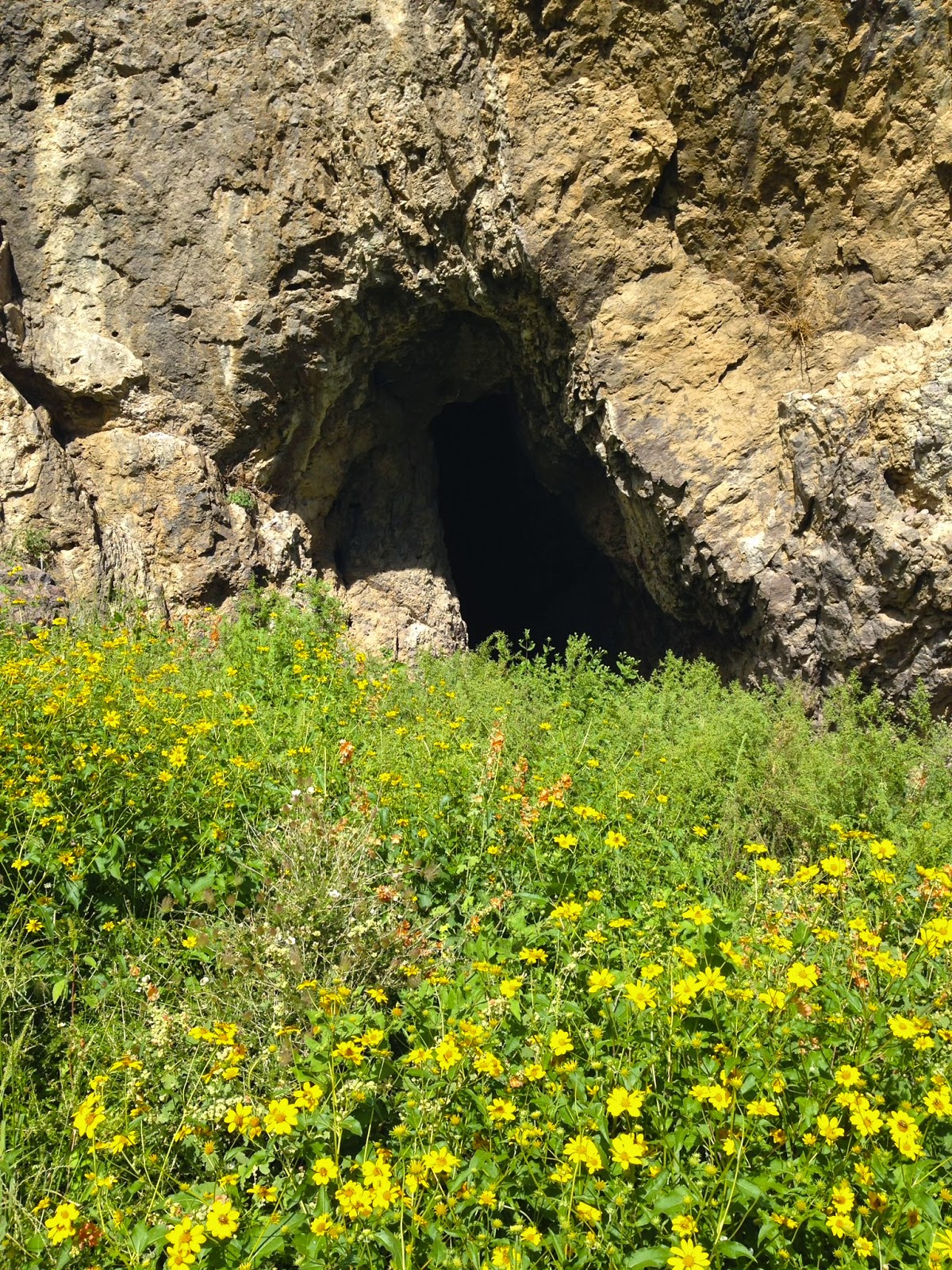Hike to Texas Canyon- Organ Mountains
 My hike to Long Canyon last Saturday brought to mind another walkabout I did more than 10 years ago to another canyon well off the beaten track in Organs. I had casually remarked while participating in Sierra Club hike( to what location I don't remember) that I was interested in finding the remains of the old gold mine in Texas Canyon. My idea was met with surprising enthusiasm by a few of the other hikers and the very next week I found myself heading out early on Sunday morning with three new acquaintances driving over to Aguirre Springs to make the trek to that very same place. We started out on the Indian Hollow trail, eventually having to make our way up the bare expanses of granite just east of Sugarloaf. From the top of that ridge we started down a ridiculously steep , as well as brushy, ravine. Mostly we were on our bottoms until we reached the bottom in a small clearing surrounded by large oaks. There was ample evidence( scat, clawed trees) that this spot was visited by a mountain lion from time to time.
My hike to Long Canyon last Saturday brought to mind another walkabout I did more than 10 years ago to another canyon well off the beaten track in Organs. I had casually remarked while participating in Sierra Club hike( to what location I don't remember) that I was interested in finding the remains of the old gold mine in Texas Canyon. My idea was met with surprising enthusiasm by a few of the other hikers and the very next week I found myself heading out early on Sunday morning with three new acquaintances driving over to Aguirre Springs to make the trek to that very same place. We started out on the Indian Hollow trail, eventually having to make our way up the bare expanses of granite just east of Sugarloaf. From the top of that ridge we started down a ridiculously steep , as well as brushy, ravine. Mostly we were on our bottoms until we reached the bottom in a small clearing surrounded by large oaks. There was ample evidence( scat, clawed trees) that this spot was visited by a mountain lion from time to time.We broke out of the thicket into the bouldery arroyo called Rock Springs Canyon. Here, we were treated with views of Sugarloaf from a vantage point rarely seen except by the most intrepid of hikers and climbers( I say this with some confidence, because as much as Sugarloaf and the rest of the Organ Mountains are photographed, I don't believe I have ever seen this "other" side in any search of images).
 i
iOn we continued across the the broad alluvial deposits between Rock Springs Canyon and Maple Canyon. This section would appear to be easy walking if one were looking at the widely spaced elevation lines , seemingly free from crossing drainages , that is the image from a topo map. Unfortunately it is actually cut through with several small,but steep sided gulches that have to be crossed, that made our trail less hiking pure drudgery.
Arriving at the the base of of the ravine opposite Texas Canyon were some large ponderosa pines, which are always lovely to see wherever you find them in the Organs. We then made our push towards the saddle. At the top, the wind howled, as we ate, while looking down into Texas Canyon. One companion and I made our way down shortly afterwards. We thought we spied some tailings piles, quite aways further down,but nothing else from the old mining operation was visible in our immediate vicinity. I wanted to explore further down,but the prospect of cross country hiking in the dark on our return trip,plus the fact that we were venturing very close to a sensitive area of White Sands Missile Range, and my fellow adventurers waning enthusiasm, meant that the more sensible option of beginning our return would prevail.
I found a nice chunk of quartz crystal, back up on the saddle that I gave away to one of my fellow travellers, and then we were on our way.
We happened upon a trail of sorts that took us up through the catclaw brambles to the top of the ridge that extends out from Sugarloaf. Unfortunately, it vanished at the top, and we once again were making our way down a treacherous ravine of unstable rock. I was little put off by one friend that seemed to enjoy this part of trip the most, as I tried to argue, unsuccessfully, for taking a safer route down. We made our way across a pasture of the ( private) Saint Augustine Ranch. We knew we had accidentally trespassed when we arrived at the fence dividing the ranch and BLM land. The earth was cooling rapidly( I believe it was January) as the sun set, but we made it back safely to my old Isuzu Rodeo. I would like to return this area one day, while I'm still reasonably young and fit. I want to see if Maple Canyon will live up to its name. I'm a sucker for the fall colors of those beautiful big tooth maples that can be seen in other dark, cool places in the Organs. Note: Only a portion of Texas Canyon is BLM land. Please do not trespass onto private land or military land on this hike . Be forewarned and be careful if you go.
Labels: hiking, Organ Mountains/Desert Peaks National Monument
















